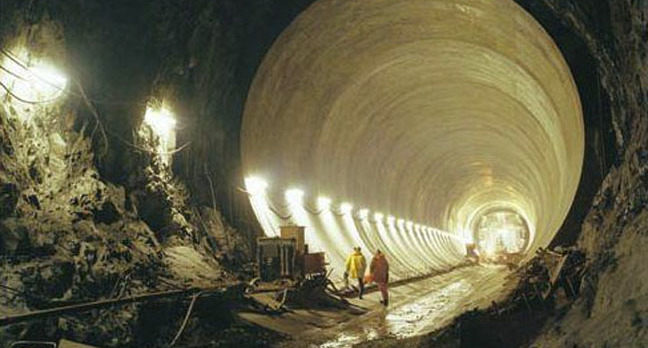keskiviikko 3. kesäkuuta 2015
http://murphyssoninlaw.blogspot.fi/2015/06/eun-epaonnistunut-paastovahennys.html
EU:n epäonnistunut päästövähennys
Matti Hukari on kirjoittanut erinomaisen artikkelin Kanava-lehteen otsikolla "Yhdysvaltojen ilmastopolitiikka Kioton sopimuksen vaihtoehtona". Jo sitä seuraava toteamus on paljastava:
Yhdysvallat on onnistunut vähentämään päästöjään ja ennen kaikkea taloutensa hiili-intensiteettiä eli bruttokansantuotteeseen suhteutettua hiilidioksidipäästöjen määrää paremmin kuin Kioton sopimuksessa olevat EU-valtiot.Hukari lähtee liikkeelle kirjoituksessaan vuodesta 1982, jolloin Reaganin hallintokäynnisti metaanihydraattien tutkimusohjelman tavoitteena vähentää maansa öljyriippuvuutta Lähi-idän arabimaista. Nyt tuo ohjelma on vihdoin saamassa tuloksia, kun arviolta 2023 Japani aloittaa koeporaukset Nankain allassyvänteessä. Sieltä uskotaan saatavan energiaa Japanin käyttöön seuraavaksi 50 vuodeksi.
/ Seuraava Reaganin hallinnon askel otettiin vuonna 1987, kun USA ja NL sopivat ydinaseiden vähentämisestä ja ydinmateriaalin muuntamisesta hyötykäyttöön kelpaavaksi ns. megatonneista megawateiksi -ohjelmalla. Sen avulla on tuotettu vuosina 1994-2013 noin 16% kaikesta ydinvoimaloiden käyttämästä polttoaineesta tuona ajanjaksona. Venäjällä on nyt varastoituna seitsemän vuoden maailmanlaajuista uraaninlouhintaa vastaava määrä ydinvoimaloiden polttoainetta. Yhdysvalloissa on rakenteilla jalostuslaitos, joka tuottaa kierrätyspolttoainetta ydinvoimaloille vuodesta 2016 alkaen.
UBS-pankin mukaan EU:n päästöoikeudet ovat tulleet maksamaan jo 287 miljardia dollaria, mutta niillä ei ole ollut mitään vaikutusta. Samalla rahalla olisi saatu päästöjä vähennettyä 40%, jos rahat olisi sijoitettu nykyisen energiantuotannon modernisointiin. Näitä ovat mm. liuskekaasun käyttö, vanhojen hiilivoimaloiden sulkeminen, uudempien päivittäminen hiilidioksidin talteenotolla ja uusien kaasuvoimaloiden rakentaminen. Liuskekaasun jälkeen seuraava suuri energiapoliittinen vallankumous voi hyvin olla merenpohjan metaanihydraattien käyttöönotto. Liuskekaasun ja yleensä kaasun poltto päästöjä alle puolet siitä, mitä öljyn ja hiilen suhteessa energiamäärään.
AP-ryhmän jäsenmaat (Kiina, Intia, USA, Japani, Australia, Etelä-Korea ja myöhemmin mukaan tullut Kanada) aloittivat 2005 Bushin johdolla yhteistyön päästöjö vähentävän teknologian kehittämiseksi. USA valitsi - toisin kuin EU - strategiakseen hyödyntää teknologian kehitystä päästöjen vähentämiseksi. Suurimmat vähennykset vuosina 2007-2012 on saavuttanut USA. Tätä nykyä kaikesta maailman hiilidioksidin talteenotosta 75% tehdään Yhdysvalloissa. Toinen merkittävä tapa on ollut ydinvoiman kehittäminen, ja Terra Powerin kehittää kaupalliseen käyttöön torium-käyttöistä voimalaa ja sulasuolareaktorista voimalatyyppiä.
Bushin hallinto ilmoitti noustessaan valtaan vuoden 2001 alussa, että se ei vaaranna kansalaisten taloutta tehottoman ilmastopolitiikan takia. EU-komissiossa tällaisia murheita ei ole kannettu. Bushin ilmastopolitiikkaa johtanut Harlan Watson vaati Kiinaa mukaan sopimukseen, jotta Yhdysvallatkin siihen voisi sitoutua. EU vastusti, ja Kiina livisti pois ja onkin nyt maailman suurin kasvihuonekaasujen tuottaja. Watson varoitti jo tuolloin EU-komissiota, että se ajaa Euroopan jälkiteolliseen talouskurjuuteen. Vartoitus meni kuuroille korville ja EU:n ilmastosankaruuden tavoittelu on johtanut globaalien päästöjen vähentämisen mahdollistavan sopimuksen viivästymiseen jo 10 vuodella. EU:ssa ilmastopolitiikka on antanut poliitikoille mahdollisuuden patsastella linssiluteina maailmanparantajina.
Yhdysvalloissa kongressi on kuunnellut tarkasti Patrick J. Michaelsia, joka on julkaissut kirjan Climate Coup vuonna 2011. Michaels kirjoittaa, miten IPCC:n toiminta on johtanut tieteellisesti ajatellen paluun keskiaikaan. Montrealin yliopiston professori Daniele Fanelli ja Stanfordissa tutkiva John Ionniadis ovat selvittäneet, että IPCC on klassinen esimerkki yhteisöstä, joka suosii haluttuihin johtopäätöksiin johtavia tutkimusmenetelmiä. Michaelsin mukaan IPCC on niin ylimielinen ja tottunut valtionpäämiesten pokkurointiin ympärillään, että sen johto on läpeensä korruptoitunut.
Edullisen energian vaikutus teollisuuden investointeihin on merkittävä. Vanha Saksan ja koko Euroopan teollisuuden tukipilari, kemianteollisuus, investoi Yhdysvaltoihin 10 miljardia dollaria vuonna 2015. Saksaan se ei ole tehnyt uusinvestointeja enää vuoden 2011 jälkeen. Alabamassa Outokumpu on saanut kannattavaksi kuumavalssattua terästä tuottavan tehtaansa, joka käyttää raaka-aineena paikallista romurautaa ja Torniosta tuotavaa kromia. Sähkön hinta on Alabamassa vain 60% Suomen hinnasta. Vuonna 2014 Iowassa avattiin ensimmäinen selluloosaetanolia tuottava laitos. Se tekee etanolia maissijätteistä eikä sen "ilmastoystävällisyys" ole selvä asia, mutta ainakaan se ei tarvitse tukiaisia toisin kuin eurooppalaiset vastineensa.
"EU:ssa keskitytään miettimään, kuinka paljon tukimiljardeja voitaisiin ohjata veronmaksajilta itseään vihreäksi kutsuvalle teollisuudenalalle. Yhdysvalloissa on oivallettu, että vain kilpailukykyiset kustannukset luovat ympäristöalalle kasvua ja kannattavia työpaikkoja", päättää Hukari kirjoituksensa.









